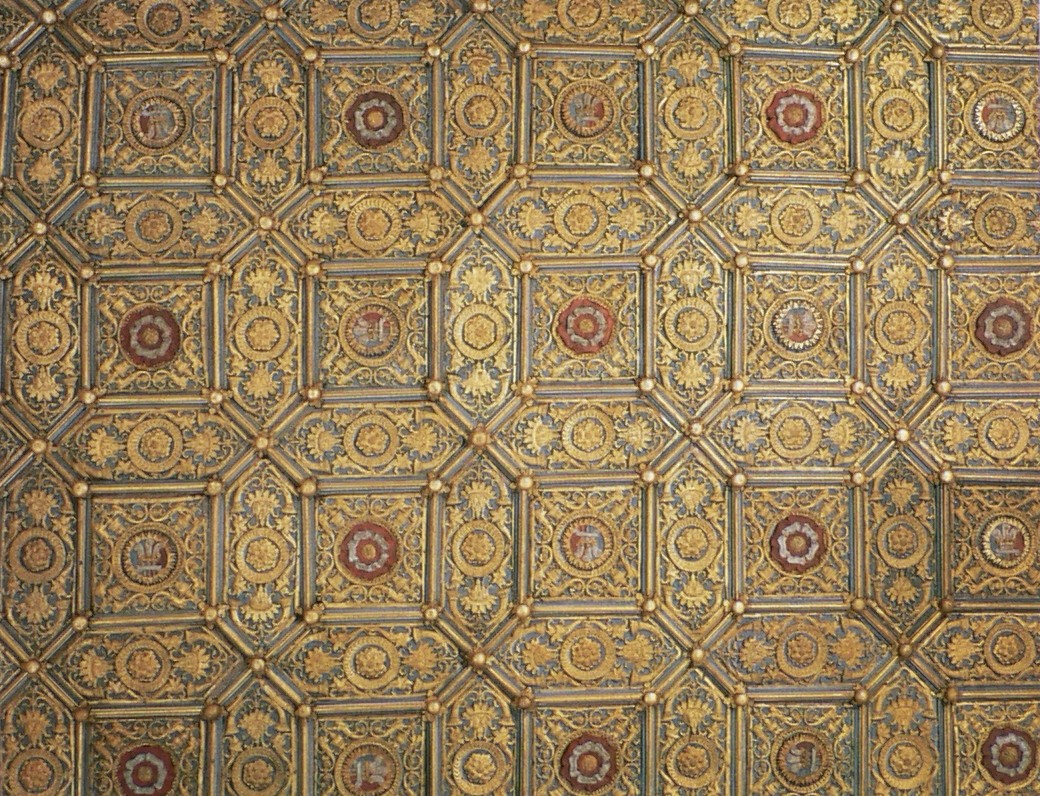The National Museum of Scotland holds in its collection the Martha Prescott sampler which they have cataloged under ref: A.1979.108 as:-
Sampler of white linen embroidered with bands of various motifs including a crowned rose and 'ER', in various coloured silks, in a modern gilt frame: English, by Martha Prescott, 1650
The rose worked in detached buttonhole is therefore the Tudor Rose of Elizabeth I but the Tudor rose should be red and white.

The Tudor Rose is the most famous symbol of the Tudor dynasty. You can see a beautiful example of it in Wolsey's closet at Hampton Court

It shows the petals of a red rose enfolding the petals of a white rose. The red rose was the symbol of the House of Lancaster and the white rose was the symbol of the House of York. Henry VII was the first Tudor king and a Lancastrian. He married Princess Elizabeth of York. Their marriage was the literal union of both houses, symbolized by the new ‘Tudor Rose’. Also, the Wars of the Roses were thus called because they represented the 15th century struggle between Lancaster and York for the throne of England.
Before the invention of aniline dyes in the early 19th century red dye came from three sources - Kermes, Cochineal or Madder.
Crimson and scarlet dye was produced from two sources - the Cochineal insects from South America and Kermes a Mediterranean insect. The words crimson in English and carmoisine in French, are derived from the word kermes.

The Cochineal dye was discovered by the Spanish explorers of South America from the Aztec Indians. The source was a tiny insect ( Dactylopius coccus ) that lived on the flattened stems of prickly pear cactus. Cochineal dye was produced by a process of crushing, boiling then drying. Spain possessed the lucrative monopoly of the expensive cochineal dye. Not surprisingly the cochineal dye was initially declined by many Europeans in preference for the older kermes dye although it had about one-tenth the coloring power of cochineal!

Madder was a European herb (Rubia tinctorum) the root of which was used in dyeing cultivated as a source of red dye. Used to produce cloth dyed in various shades of red based colors including orange, russet, pink, coral, light red, dark red, russet and brown.
So why is Martha's rose white when it would orginally have been red?
The natural dyes available in 1630 whilst capable of producing vivid colours were unstable and prone to fading. The Met have a very interesting blog post on this subject The Dyes Have It: Exploring Color and Tapestries it is well worth a read and explains many of the anomalies in colour we see in the samplers that we love.

